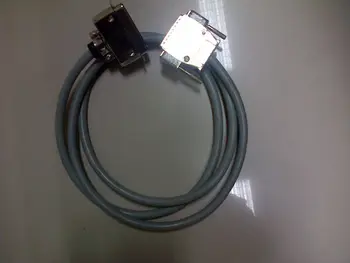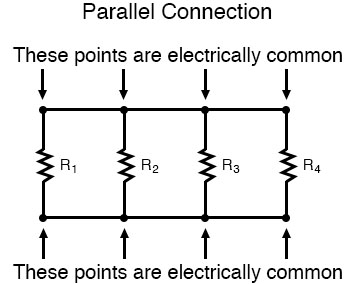Tajima Serial Connection Vs Parallel
More often than not a question pops up in our forum about speaker impedance and the result of connecting multiple speakers to a single amplifier. Thus we have prepared this introductory tutorial to help clear up some of these questions.
The most common ways of hooking up more than one speaker to an amplifier channel are:
- Series Connection
- Parallel Connection
- Series-Parallel Connection (for more than 2 speakers)
This is done because the problem might have arisen due to a wrong connection of the RS232 cable. The fourth problem that is faced by many users of RS232 to RS485 ports is incorrect pin configuration, or finding it hard to deal with the serial ports' connector genders. This makes it hard for people to 'mate' or connect any devise that uses this. Key Differences between Series and Parallel Circuits. In electrical and electronics engineering it is very important to know the differences between series and parallel circuits. They are the two most basic forms of electrical circuit and the other one being the series-parallel circuit, which is the combination of both, can be understood by applying the same rules. . In a Parallel connection, the current splits into two or more sections. An open circuit on any section doesn’t affect the others. A Series connection have all sections “head to back” connected.
There are pros and cons to each method which we will discuss herein.
To understand the differences, we must first explore the very basic principle of how electricity flows through a circuit.
Ohms Law: V = i * R where V = voltage, i = current, R = resistance (1)
A loudspeaker isn't a simple resistance because it is an electroacoustical-mechanical device which is usually governed by a complex passive crossover network comprised of inductors, capacitors and resistors. Thus the speaker system presents a complex impedance which varies with frequency and power level. 'Complex' here means impedance is a vector quantity possessing both phase & magnitude.For simplicity sake, we shall model our system's impedance magnitude only, ignoring phase . As an example, let's look at an impedance curve (or modulus of impedance) of an actual loudspeaker (the Onix x-ls).
Graph 1: Sample system modulus of impedance
The impedance minimum 0f 6.56 Ω at 42 Hz indicates the vented box tuning frequency. There are two other local minima, found at 164 Hz (6.386 Ω) and 3.4 kHz (4.97 Ω). That the first two minima are proximal in magnitude indicates an efficient reflex action. The large impedance peak, found at ~ 850 Hz arises as a result the interaction of the crossover network's high- and lowpass sections, setting up a parallel resonance. The impedance phase swings between +39° and -54° across the audible spectrum. With a lowest magnitude minima value of 4.97 Ω, the system nominal impedance (per IEC standards) value would be 6 Ω.
Series Connections Basics
Schematic 1: Series Circuit
As you can see in our diagram above, we have connected Zspk1 and Zspk2 in series with our amplifier (Vs). Using Ohms law (1) we can calculate the following relationships:
Equivalent Impedance also known as the Thevenin Impedance where we short our voltage source (in this case our amplifier) to calculate the total load it will see from our two speakers connected in series.
Zeq = Zspk1 + Zspk2 (2)
For simplicity, we shall use identical speaker loads from the speaker we showed in the above example.
Hence, Zspk1 = Zspk2
Zeq = 6 + 6 = 12 ohms
Thus by connecting two speakers in series, the amplifier now sees double the load impedance. But how does this translate to power delivery?
In a series circuit, there is only one path from the source through all of the loads and back to the source. This means that all of the current in the circuit must flow through all of the loads and the current though each load is the same.
To calculate voltage drop through each load, we apply Ohms law: (1)
Vspk1 = i * Zspk1

Vspk2 = i * Zspk2
Next we apply Kirchoff's Voltage Law (KVL) which dictates the sum of the voltages within a circuit must equate to zero.

Thus we get the following relationship:
Vs = Vspk1 + Vspk2 or Vspk1 + Vspk2 - Vs= 0
Let's assign some arbitrary numbers to solve for the variables in our equations.
Vs = 10V
Zspk1 = Zspk2 = 6 ohms (as per our speaker example)
First we must solve for current in the circuit so we can calculate our voltage drops to each load.
Using KVL we write the following mesh equation:
-10V + i*(6) + i*(6) = 0

Solving for I, we get: i = 10 / 12 = 0.83A
Now we can solve for our load voltages using Ohms law (1):
Vspk1 = i * Zspk1 = 0.83A * 6 ohms = 5V
Vspk2 = i * Zspk2 = 0.83A * 6 ohms = 5V
Of course a more simplified method known as the Voltage Divider principle can be used for calculating voltage across loads in series circuits. Here is how we can quickly solve for Vspk2:
Voltage Divider Relationship: Vspk2 = Vs * (Zspk2) / (Zspk1 + Zspk2) (3)
Using KVL we check to see if the sum of our load voltages equal our source so that the total voltage summation in the circuit equates to zero.
-Vs + Vspk1 + Vspk2 = 0
-10 + 5 + 5 = 0
as you can see we correctly calculated our circuit voltages as KVL was satisfied. Working up a circuit model using Electronics Workbench (EWB) confirms this.
Schematic 2: Series Circuit
But what about power?

To calculate our power to each loudspeaker, we must first develop a relationship for power.
Here are three commonly used equations: P = V * i ; P = V^2 / R or P = i^2 * R (4)
The Handy Dandy Ohms Law Pie Chart
What Is Serial Communication And How It Works? [Explained]
Since we calculated all of our circuit voltages and current, we can find power with either of the above equations. Let's use P = V^2 / R only we shall represent R as Z for our loudspeaker magnitude.
Pspk1 = Vspk1^2 / Zspk1 = (5V)^2 / 6 = 25 / 6 = 4.17 watts
Pspk2 = Vspk2^2 / Zspk2 = (5V)^2 / 6 = 25 / 6 = 4.17 watts
Ptot = Pspk1 + Pspk2 = 4.17 watts + 4.17 watts = 8.33 watts
If we were to rework this example for just one 6 ohm loudspeaker connected to our amplifier, we would have seen the following power delivery to the loudspeaker:
Pspk = 10^2 / 6 = 16.67 watts since all of the voltage from our amplifier would have been delivered to the single loudspeaker load. Once again our model confirms this.
Schematic 3: Single Load
Series And Parallel Circuits - Wikipedia
Thus connecting two speakers in series resulted in ½ the power consumption of just one speaker directly connected to our amplifier. This makes sense since the amplifier is now seeing double the load impedance and delivering only ½ the current.
So how does this equate to sound pressure levels?
Since we connected two identical speakers in series with our amplifier, each speaker only sees half the voltage drop across it thus as a result will see only 1/4 the power delivered to each speaker compared to a single speaker connected to our amplifier. The equivalent SPL now produced by each speaker is 6dB lower than if a single speaker were playing off the amplifier, for a combined overall -3dB drop. However, running two speakers effectively doubles the volume displacement compared with that of one speaker. Thus playback through the two drivers results in a 3dB gain. Adding this to the 3dB drop previously mentioned and the net overall sound pressure level will remain unchanged. Thus, playing two identical speakers connected in series off of a common amp (as opposed to playing just one speaker off that amplifier) results in no level drop, when compared to the single speaker case. This analysis, of course, ignores mutual coupling and any room-induced acoustical artifacts. However, if the speakers connected in series are not co-located and summing perfectly in the room, the net SPL would likely be up to -3dB lower than playing a single speaker off the same amplifier. The net SPL product in this case has a dependent relationship on distance between the speakers and frequencies they are destructively interfering in the room.
Modeling both a single-driver system as well as a series-wired, dual-driver system we see the dB spl plots are virtually identical.
Graph 2a: Single driver, system model: Amplitude response. dB spl @1m/2.828Vac drive level, ref. to 20 μPa.
Graph 2b: Dual- driver, series wired system model: Amplitude response. dB spl 1m/2.828Vac drive level, ref. to 20 μPa.